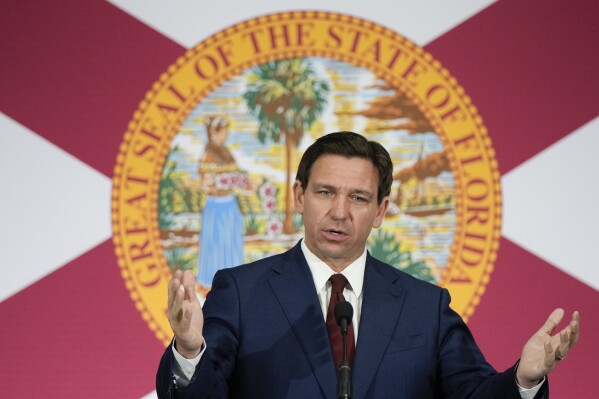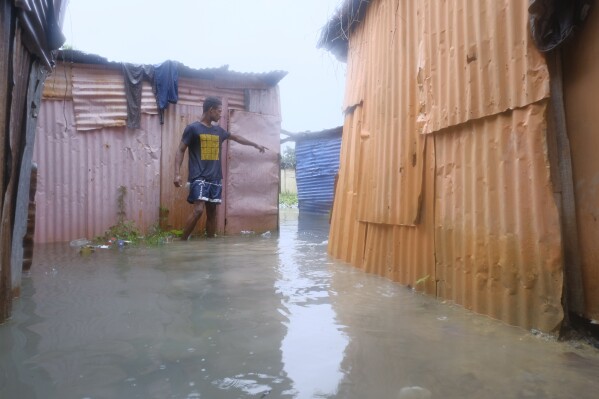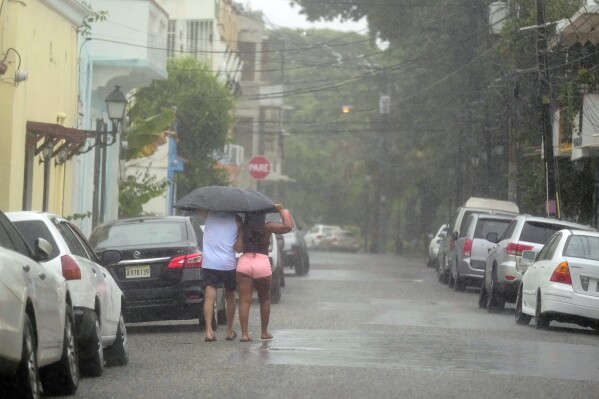Forecasters: Tropical Storm Idalia forms in Gulf of Mexico
MIAMI (AP) — Tropical Storm Idalia formed Sunday in the Gulf of Mexico on a potential track to come ashore as a hurricane in the southern U.S., the National Hurricane Center said.
At 11:15 a.m., the storm was located about 80 miles (129 kilometers) east-southeast of Cozumel, Mexico, moving east at 2 mph (3.2 kph) with highest sustained winds of 40 mph (64 kph), forecasters said. Hurricanes have winds of 74 mph (119 kph) and above.
Forecasters said they expected Idalia to become a hurricane on Tuesday in the Gulf of Mexico and then curve northeast toward the west coast of Florida. Initial forecasts indicated that could come ashore on Wednesday as a Category 1 hurricane.
The storm was not expected to menace southwest Florida, where deadly Hurricane Ian struck last year.
 Much of Florida under state of emergency as possible tropical storm forms in Gulf of Mexico
Much of Florida under state of emergency as possible tropical storm forms in Gulf of Mexico
 Dominican officials inspect damage inflicted by Tropical Storm Franklin after heavy flooding kills 2
Dominican officials inspect damage inflicted by Tropical Storm Franklin after heavy flooding kills 2
 At least 1 person is dead and 2 are missing as Tropical Storm Franklin batters Dominican Republic
At least 1 person is dead and 2 are missing as Tropical Storm Franklin batters Dominican Republic
Tropical storm conditions are expected Sunday over the Yucatan peninsula and western Cuba.
Gov. Ron DeSantis said Saturday in a post on the social media site X, formerly known as Twitter, that he has directed state emergency officials begin preparations for a storm.
“Residents should remain vigilant and prepare for possible impacts early next week,” said the Republican governor, who is a candidate for the GOP presidential nomination.
Florida emergency officials on Sunday urged residents to keep their vehicle gas tanks at least half-full in case they need to evacuate.
“This will ensure you can evacuate tens of miles inland to a safe location should the need arise,” the Florida Division of Emergency Management said on social media.
Thirty-three Florida counties are under a state of emergency, the agency said in a separate statement.
So far this year, the U.S. East Coast has been spared from cyclones but in the west, Tropical Storm Hilary caused widespread flooding, mudslides and road closures earlier this month in Mexico, California, Nevada and points to the north.
The National Oceanic and Atmospheric Administration recently said the 2023 hurricane season would be far busier than initially forecast, partly because of extremely warm ocean temperatures. The season runs through Nov. 30, with August and September typically the peak.
Disclaimer: The copyright of this article belongs to the original author. Reposting this article is solely for the purpose of information dissemination and does not constitute any investment advice. If there is any infringement, please contact us immediately. We will make corrections or deletions as necessary. Thank you.



